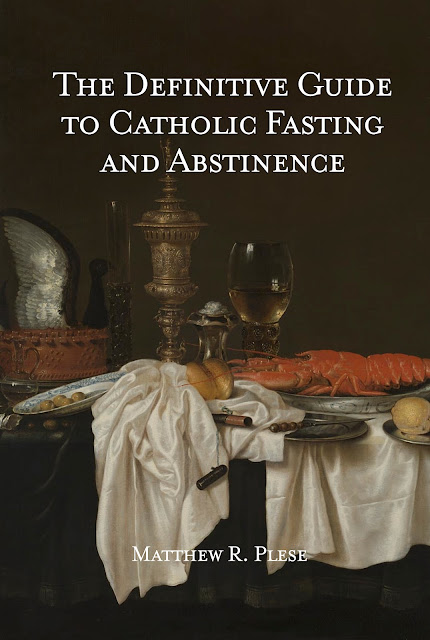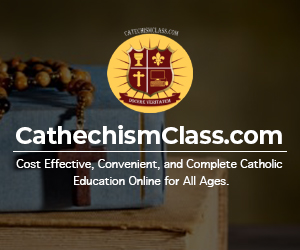Principle 1: Authority and Validity of Law
Law Must Originate from a Valid Lawgiver
A fundamental principle in both civil and ecclesiastical law is that a law must be issued by a legitimate authority. In civil society, this requires that laws are passed in accordance with constitutional procedures and by recognized governmental bodies. Similarly, within the Church, a valid lawgiver is required to issue binding ecclesiastical laws.
In the Church, the Pope generally holds this authority. However, this authority is contingent upon his continued legitimacy as Pope. According to established Church teaching, if a Pope falls into heresy, he loses his office and thus his authority to promulgate laws. This concept is supported by notable canonists and theologians:
X. Wernz and P. Vidal (1943): "Through notorious and openly divulged heresy, the Roman Pontiff, should he fall into heresy, by that very fact [ipso facto] is deemed to be deprived of the power of jurisdiction even before any declaratory judgement by the Church. A pope who falls into public heresy would cease ipso facto to be a member of the Church; therefore, he would also cease to be head of the Church." (Ius Canonicum, 2:453)
Udalricus Beste (1946): "Not a few canonists teach that, outside of death and abdication, the pontifical dignity can also be lost by falling into certain insanity, which is legally equivalent to death, as well as through manifest and notorious heresy. In the latter case, a pope would automatically fall from his power, and this indeed without the issuance of any sentence, for the first See [i.e., the See of Peter] is judged by no one. The reason is that, by falling into heresy, the pope ceases to be a member of the Church. He who is not a member of a society, obviously, cannot be its head." (Introductio in Codicem, 3rd ed., Canon 221)
Thus, any laws or documents issued by a Pope who has lost his authority due to heresy are invalid and not binding. This principle calls into question the legitimacy of the 1983 Code of Canon Law if issued under such circumstances, especially considering the actions of John Paul II who promulgated the 1983 Code.
Principle 2: The Salvation of Souls as Supreme Law
Laws Must Not Harm Souls
Even if a law is issued by a legitimate authority, it must be rejected if it is harmful to souls or promotes sin. The maxim salus animarum, suprema lex (the salvation of souls is the supreme law) underscores this obligation. In 1984, Archbishop Lefebvre called the new code another grave problem undermining the Church and stated that the new Canon Law is very serious for it goes much further [i.e. promoting errors] than the Council itself in a October 29, 1984 conference at Stuttgart, Germany.
The 1983 Code of Canon Law introduces a novel conception of the Church that undermines traditional ecclesiology and instead embraces the ecclesiology of Vatican II, which erases the distinction between clergy and laity. Canon 204 exemplifies this by defining all the faithful, clergy and laity alike, as partaking in Christ's priestly, prophetic, and royal functions. This new understanding dissolves the unique roles of the clergy, leading to the laicization of the Church. Such a shift is detrimental, as it aligns with Protestant reforms that laicized the priesthood, diminishing the sacred character of the clergy.
Archbishop Bugnini's reforms in the Liturgy further illustrate this harmful trend. The liturgical changes aimed to transform the Mass into an action of the entire "people of God," minimizing the role of the priest and the mystical nature of the Mass. This shift from God-centered worship to man-centered activity undermines the sanctity of the Eucharist and the priesthood.
The new Code even permits practices such as giving Communion to Protestants, a clear rupture from traditional Catholic teaching. This "eucharistic hospitality" contradicts the sacrament's role as a sign of unity in the Faith, thereby compromising the Church's doctrinal integrity. The 1983 Code is a codification of the errors of Vatican II, which are dangerous to souls as they undermine true doctrine, piety, and holiness. We see this reflected in the unmistakable collapse of Catholic praxis after Vatican II.
Conclusion
Catholics are bound by these two principles: the necessity of a valid lawgiver and the imperative to reject laws harmful to souls. Given either the questionable legitimacy of the authority behind the 1983 Code of Canon Law or its harmful spiritual consequences, Catholics are obliged to adhere to the strictness of the 1917 Code and reject the novelties introduced by the 1983 Code. While even the 1917 Code lessened discipline for Catholics in many regards, it nevertheless was a valid Code. The same unwaveringly statement of validity can not apply to the 1983 Code.
Salus animarum, suprema lex. Long live Tradition. Long live the True Catholic Church. Down with the counterfeit Church of the Modernists.








4 comment(s):
This article is definitely over my head! The 1917 Canon is a long read. Beyond the fasting, are there important differences between the 1917 and 1983 Codes we should be aware of?
The 1917 Code of Canon Law (CIC 1917) is widely regarded as a masterwork of juridical precision and theological clarity, reflecting centuries of Church tradition. In contrast, the 1983 Code of Canon Law (CIC 1983), while incorporating the vision of the Second Vatican Council, often sacrifices the rigor and depth of the earlier Code for pastoral flexibility. Below is a comparison, emphasizing why the 1917 Code is superior in each area:
1. Structure and Organization
1917 Code: Its five-book structure is concise and logically ordered, reflecting the clear juridical principles of Roman law and centuries of canonical tradition. The fewer canons (2,414 compared to 1,752 in 1983) maintained precision and detail without unnecessary redundancy, making it an unparalleled guide for canonists.
1983 Code: By reorganizing into seven books and introducing vaguer concepts, it diluted the focus on law and tradition. The emphasis on "pastoral" rather than juridical clarity creates ambiguities that can undermine enforcement of discipline.
Superiority of 1917: Its structure upheld a well-defined, authoritative legal system that left little room for misinterpretation, ensuring both consistency and respect for tradition.
2. Ecclesiology and Theology
1917 Code: It emphasizes the Church as a perfect society (societas perfecta), divinely instituted, with clear hierarchical authority. This framework highlighted the central role of the papacy and the clerical state in maintaining unity and order.
1983 Code: Shifts focus to the Church as the "People of God" (CIC 1983, can. 204), creating a more egalitarian vision. While this may sound inclusive, it risks undermining the authority of the hierarchy and the unique role of the clergy in governing the Church.
Superiority of 1917: By firmly rooting its ecclesiology in the hierarchical nature of the Church, it protected the divinely instituted structure from secular influences and preserved the clerical state’s dignity.
3. Role of the Laity
1917 Code: Clearly defined the laity's role as one of obedience, reverence, and participation in the sacramental life of the Church under clerical guidance. This ensured that the laity understood their place in the Church's divine hierarchy.
1983 Code: Introduces active participation of the laity in governance and liturgical roles (e.g., diocesan councils and extraordinary ministers of Holy Communion). This blurs the distinctions between clergy and laity, creating confusion and, at times, abuse of liturgical norms.
Superiority of 1917: It preserved the dignity of the clergy and the laity’s proper role within the Church, maintaining a clear distinction between sacred and secular responsibilities.
4. Marriage and Family
1917 Code: Defines marriage as primarily a contract for procreation and the education of children (CIC 1917, can. 1013). This focus protected the traditional, God-given purpose of marriage and safeguarded its indissolubility.
1983 Code: Broadens the definition of marriage to include "the good of the spouses" (CIC 1983, can. 1055), which risks prioritizing personal satisfaction over the objective purpose of procreation. This change aligns more closely with secular views of marriage.
Superiority of 1917: By emphasizing procreation and the education of children, it upheld the natural and sacramental purposes of marriage, guarding against the modern erosion of its sacred character.
5. Sacraments
1917 Code: Upholds stricter requirements for the reception of sacraments, preserving their dignity and ensuring proper preparation and reverence, such as strict Latin usage and precise rubrics for liturgical acts.
1983 Code: Introduces flexibility to accommodate pastoral situations, such as allowing vernacular languages and loosening requirements for sacramental reception. These changes, while seemingly practical, can lead to a loss of reverence and uniformity.
Superiority of 1917: Its rigorous sacramental norms ensured uniformity, reverence, and respect for the sacred mysteries, preventing liturgical abuses.
6. Penal Law
1917 Code: Clearly defines penalties, including excommunications and other censures, ensuring that violations of Church law were met with firm consequences. Automatic excommunications for serious offenses (e.g., joining Freemasonry, CIC 1917, can. 2335) reinforced the Church's authority and moral clarity.
1983 Code: Reduces automatic penalties and prioritizes the offender's reform over punishment. This can result in leniency and inconsistent enforcement, undermining discipline and respect for Church law.
Superiority of 1917: Its precise penal system maintained discipline and deterred disobedience, upholding the Church's authority and moral integrity.
7. Language and Style
1917 Code: Written in precise, technical Latin, reflecting the Church's legal tradition and ensuring clarity for canonists. The technicality reinforced the seriousness of Church law.
1983 Code: Uses simpler language and a more pastoral tone, which, while accessible, sacrifices legal precision and risks misinterpretation.
Superiority of 1917: Its technical Latin safeguarded legal clarity and consistency, ensuring that canon law remained a stable and authoritative guide for the universal Church.
Conclusion:
The 1917 Code of Canon Law stands as a testament to the Church's commitment to doctrinal clarity, juridical precision, and fidelity to tradition. Its strict and hierarchical approach reflects the timeless and divinely instituted nature of the Church. By contrast, the 1983 Code, while seeking to adapt to modern pastoral needs, often compromises these principles, leading to ambiguities and potential abuses. The 1917 Code better preserves the Church's authority, unity, and sacred mission.
Thank you so much, Matthew! I will dig into this. So much to learn. I am working through your books. Thank you so much for all you do.
Post a Comment